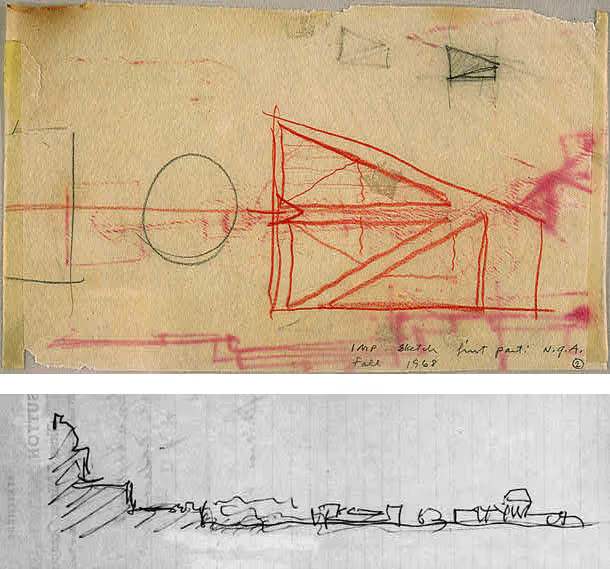With Snaptrude, sketching and BIM are one

Architects love to sketch. The late great I.M. Pei famously sketched his initial design for the East Wing of the National Gallery of Art in Washington, DC, on an airline cocktail napkin, and that sketch is now part of the archives at his firm. Today’s and tomorrow’s generations of architects have taken to sketching with equal vigour and excitement, but do so not just with pen on paper but with SketchUp and Rhino, among other programs.

But why do we still only sketch? Neither SketchUp nor Rhino are BIM programs. What’s more, like Revit, they take a lot of computer infrastructure to run. That’s why we built a cloud-based hybrid: Snaptrude. It allows all of the sketching capabilities of SketchUp and the modelling abilities of Rhino but in a BIM application.
Most architects would agree that the concept phase of a project is the most exciting. It’s when the grand ideas about the project are put forth, debated, and tested. But how do you get your ideas in front of your client? Through a tedious, costly, and slow effort of putting together a huge presentation. But with Snaptrude, that same client can just log on to the system, pull down the concept drawings and make comments directly in the program.
No one doubts the brilliance and efficacy of the SketchUp interface. It has revolutionised design in ways that can hardly be measured. But Snaptrude’s sketch abilities are equally intuitive and easy to learn. You can push, pull, twist, rotate, torque, split, extrude – you name it. You can do shadow and sun studies, and apply materials to get the design to a point where the client can have a real reaction. The key difference is that this “sketch” is already data-rich – it contains information about cost and fabrication; about the size and configuration of doors and windows; about load bearing capabilities, thermal qualities and so forth. It’s already in BIM, no exporting is necessary.
.gif)
BIM at its most basic is about generating, managing, and sharing information. That’s why construction companies love Revit and can’t do a thing when they’re presented with a SketchUp or Rhino document. The latter two, however amazing they may look, are just a 3D mesh or surface. This speaks to the sometimes exhausting cultural divide between architects and those who execute their designs. Architects are infatuated with dazzling images; engineers and construction managers need practical information.
The COVID-19 pandemic made it difficult for designers, collaborators, and clients to get together in person and discuss solutions and react to proposals. But Snaptrude’s cloud-based capability means architects, interior designers, acousticians, landscape architects, engineers, construction managers, and clients all have access to the same information in real-time. No embarrassing mention of “these drawings aren’t the latest. . .” Snaptrude’s digital models are parametric – the program automatically edits models based on spatial changes you make.
Thomas Jefferson, the United States of America’s only architect/president, once invented a device in which the writer’s hand moves one pen whose action is duplicated by the second one, producing a copy strikingly like the original. Thus he could mail one copy and keep the other. A cloud-based BIM program is this same basic idea, replicating and sharing something of value. Snaptrude takes this concept and transports it into the digital 21st Century.
Sketching and BIM need not be separate tasks, necessitating time-consuming exporting and reconfiguration of models and data. With Snaptrude, sketching and BIM are one.


